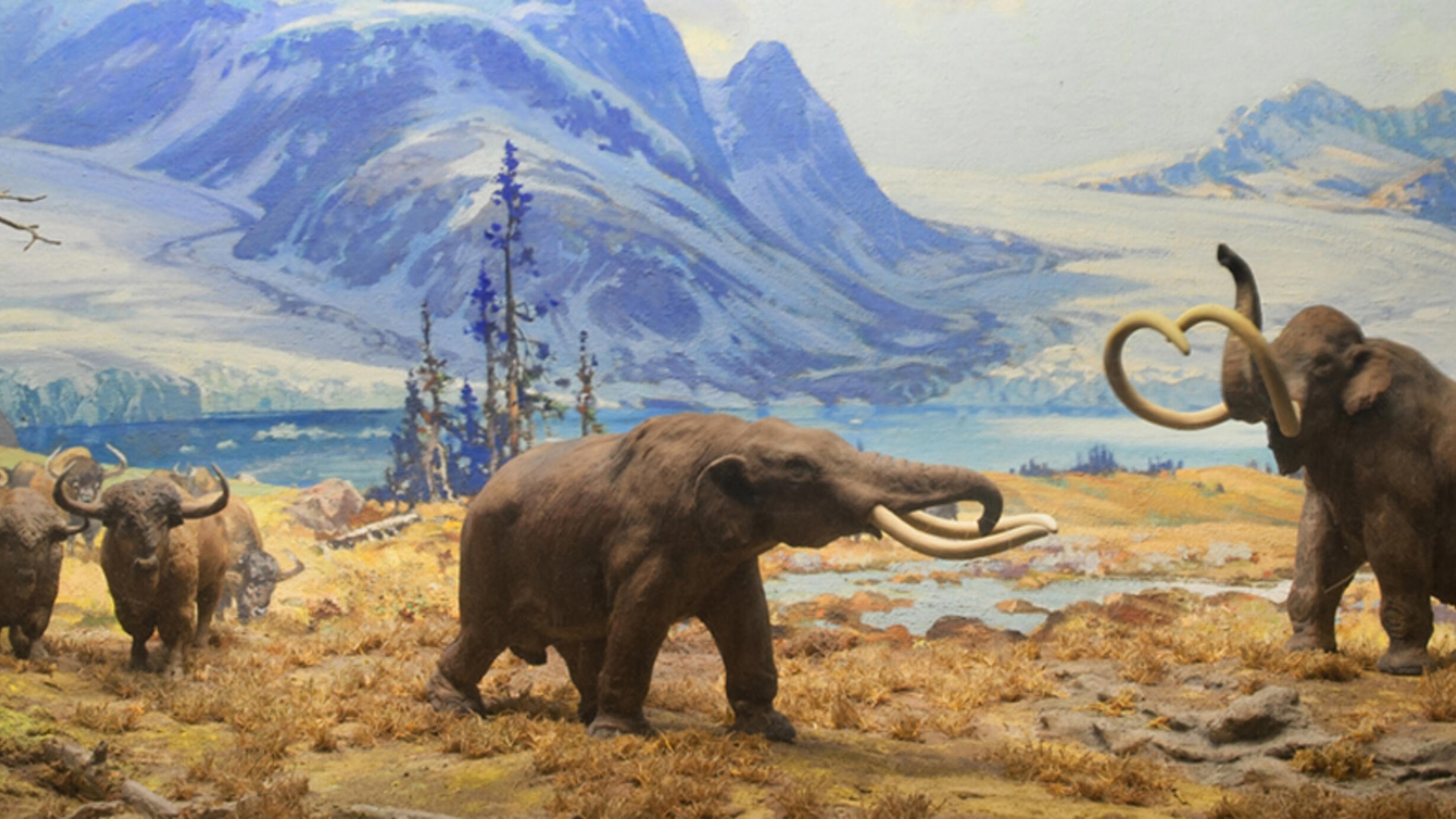Extinct American Mammals of the Ice Age
Part of Hall of North American Mammals.
Part of Hall of North American Mammals.

Miniature models of mammoths and other ice-age mammals are depicted in two small dioramas at the entrance to the Hall of North American Mammals. One of the remarkable things about ice-age North America was the number of large predators and scavengers.
Although some of the large mammals in these dioramas resemble animals alive today, all of the ones illustrated are extinct for reasons that may include overhunting, climate change, massive meteor impact, emerging diseases, or a combination of factors.
During the last ice age, vast sheets of ice extended well beyond the polar regions. By about 12,000 years ago, the ice sheets had significantly shrunk—and so had the Northern Hemisphere’s variety of large mammals. In North America, about five dozen kinds of mammals, big and small, went extinct as the ice slowly retreated.
The causes of the extinctions are still under debate. Perhaps many species could not cope with the changes to their environment. Widespread disease or a meteorite impact may have occurred. A more likely influence, however, is a predator who had arrived in North America just before the extinctions happened—humans.